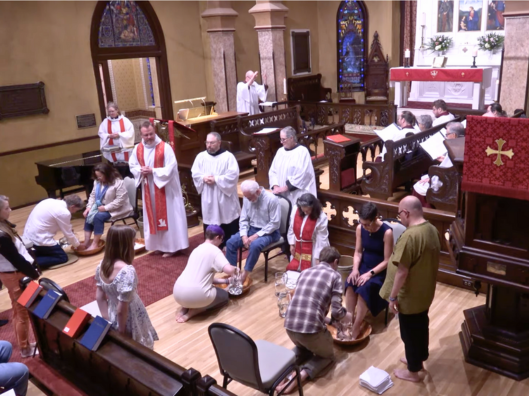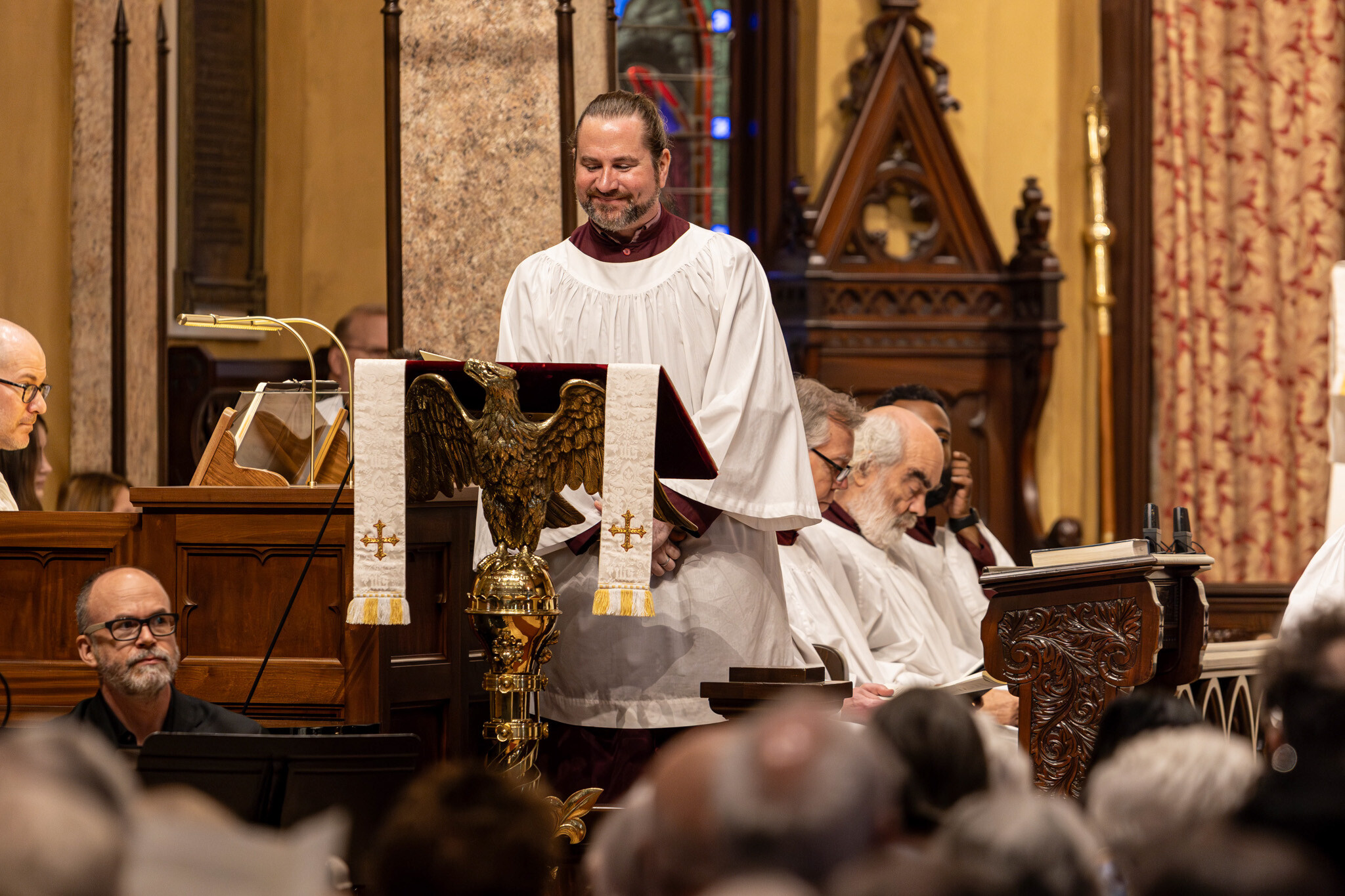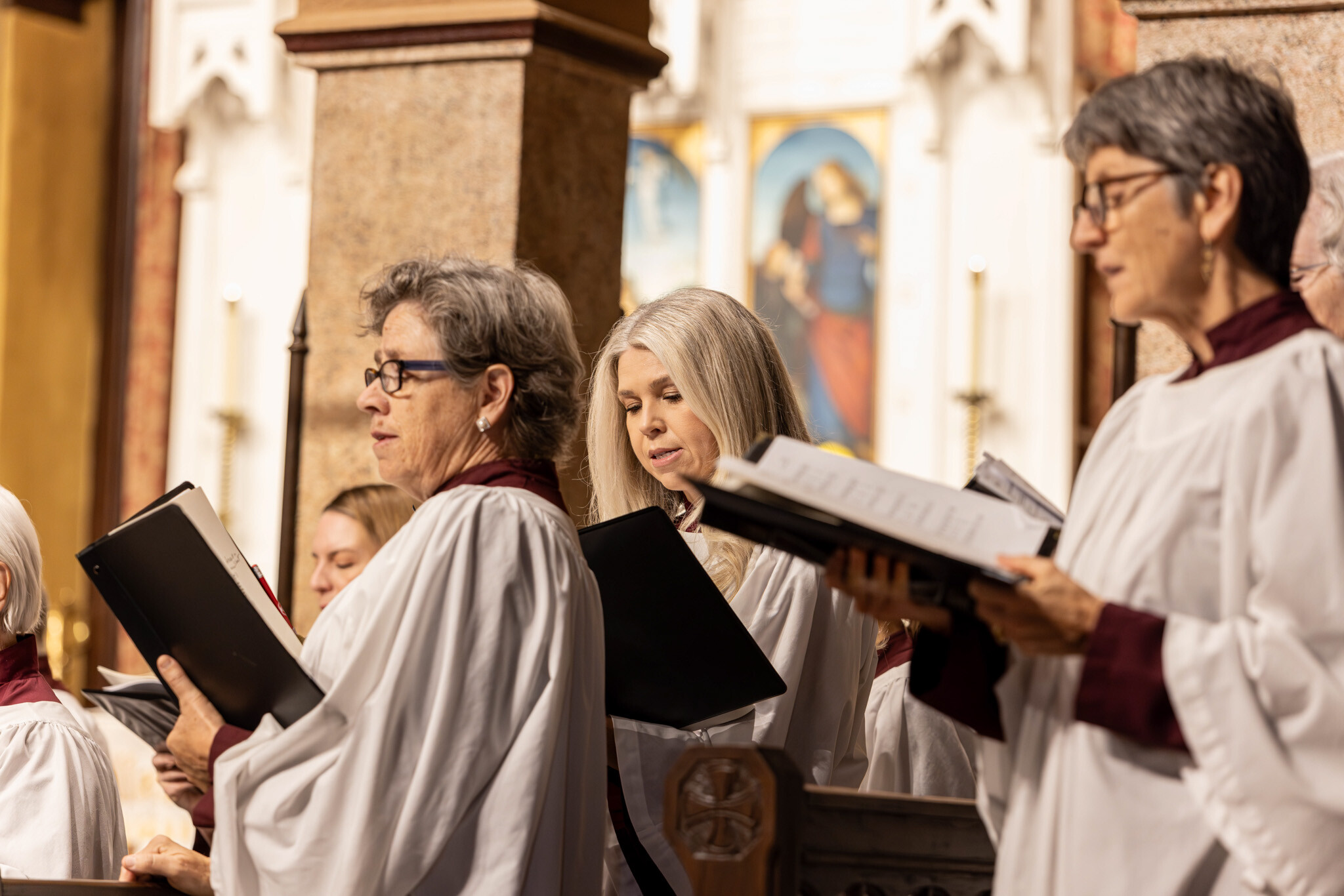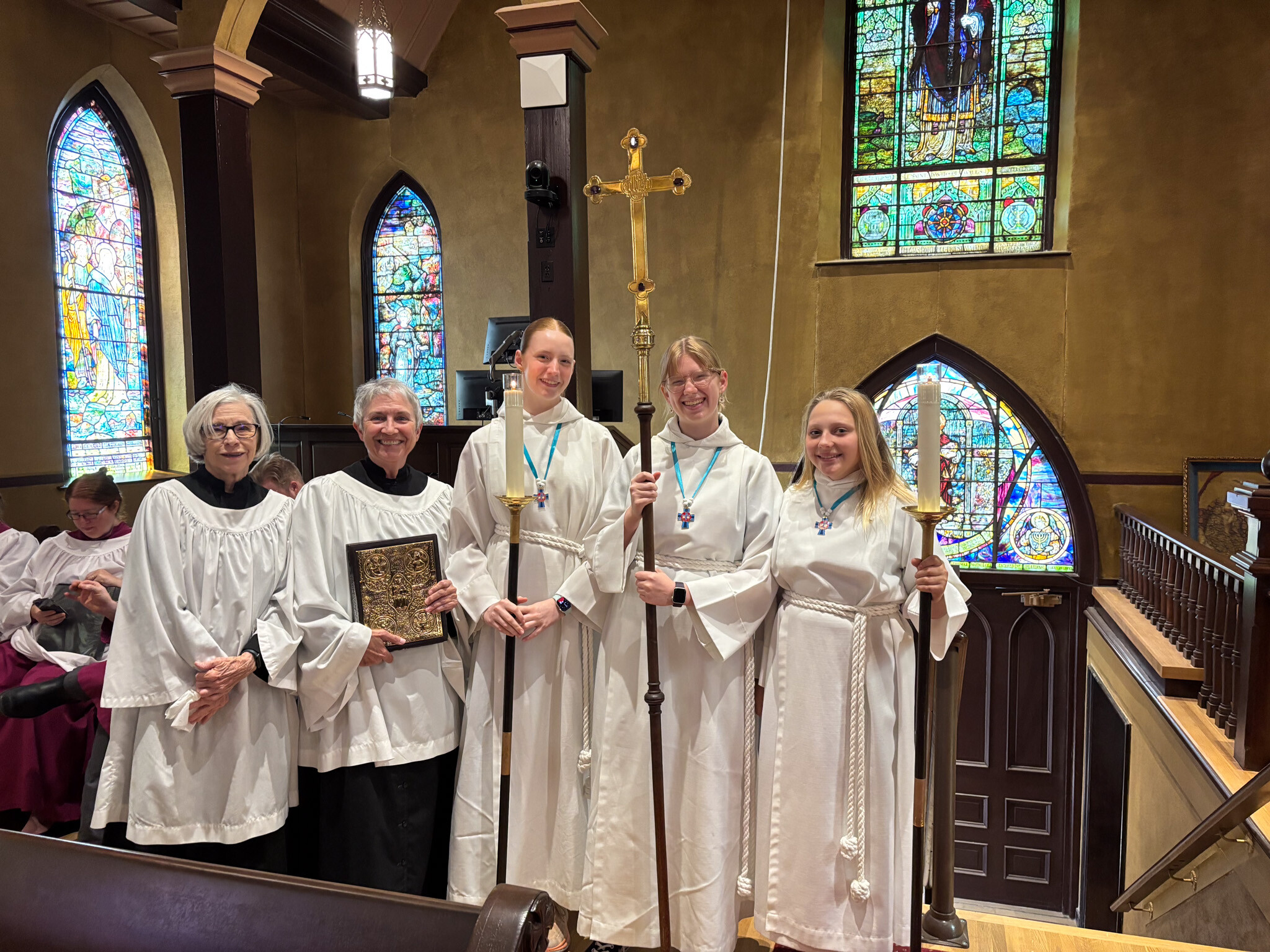
MAUNDY THURSDAY – APRIL 17
This service includes foot washing
7 PM – Maundy Thursday Holy Eucharist with Stripping of the Altar, livestreamed
A number of fine hymns and hymn-tunes, both very old and very new, grace our celebration of Maundy Thursday.
These chant or chant-like tunes (i.e. largely modal – essentially, playable on the white keys of the piano, which represent the diatonic scale – and with simple rhythms, whether in regular meter or no) admirably support the moods and meanings of these texts and of the occasion as a whole.
Pange lingua gloriosi corporis mysterium (‘Now, my tongue, the mystery telling’ [329])
This classic Eucharistic hymn was written or edited by St Thomas Aquinas for the new feast of Corpus Christi (the Body of Christ) instituted in the thirteenth century, using the same incipit, meter, and tune as the fifth-century Holy Cross hymn ‘Pange lingua gloriosi proelium certaminis’ (‘Sing, my tongue, the glorious battle’ [165/166]). It recounts Christ’s incarnation, ministry and ultimate sacrifice, and Last Supper, before specifically treating the institution of the Eucharist (‘Word made flesh, the bread he taketh, by his word his Flesh to be...’ – a thing to be seen only with the eyes of faith), interpreting this as the Christian Passover. Various stanzas of the hymn have been set chorally countless times, using the fine proper melody or original music, and the last two stanzas (‘Tantum ergo sacramentum...’) are also often sung separately at Eucharistic devotions.
Ubi caritas et amor (‘Where true charity and love dwell’ [606])
This hymn (strictly speaking, an antiphon with verses), possibly as old as the late eighth century, has been used at the Maundy Thursday footwashing ceremony since perhaps the tenth or eleventh. Appropriate on many occasions, it speaks of Christians’ goal and desire of unity in and because of Christ’s love. The fairly literal translation by Joyce Glover is made to fit the structure of the proper melody, with lines of 8 + 4 syllables, in contrast to one of the two paraphrases also included in the Hymnal (‘God is love, and where true love is...’ [576/577]), which contains the same total number of syllables per line but does not respect the caesura inherent in the tune. We also often sing the other, looser, paraphrase in the Hymnal, ‘Where charity and love prevail’ [581]. The Hymnal text of 606 includes one error: ‘hear’ should be ‘fear’, translating the Latin ‘timeamus’ (‘let us fear’).
You laid aside your rightful reputation [734]
This fine modern text by Rosalind Brown moves from a reference to Philippians 2, the great poem of Christ’s humiliation and exaltation read on Palm Sunday, to the scene of the Maundy Thursday foot-washing, then looks back at other events in which Christ chose to associate with outcasts. It ends with the prayer that the singers may follow in this way of ‘humble, costly service’: a phrase neatly capturing the character and price of Christly ministry. The tune ‘Intercessor’, a surprisingly chaste and indeed hauntingly beautiful melody by C.H.H. Parry, an important Victorian–Edwardian (and therefore almost inevitably bombastic) composer, was an inspired pairing by the editors of Wonder, Love, and Praise with Brown’s text.
Lord, make us servants of your peace [594]
This text is a paraphrase of the beloved ‘Prayer of St Francis’ by the noted Jesuit hymnist James Quinn, four of whose texts appear in the Hymnal. Its chosen tune is notable for the unusual (for a hymn-tune) meter of five beats per bar: the ‘extra’ beat gives the syllabic setting some breadth, and the alternating groups of two and three beats, combined with mostly stepwise motion, lend a flowing, chant-like quality.
Three holy days enfold us now [733]
If the first line of this hymn by Sr Delores Dufner, a Benedictine nun, is true, it is also true that this short, simple, powerful text encompasses the elemental objects, actions, and events of those Three Days of Maundy Thursday, Good Friday, and Easter – washing feet, breaking bread, cross, font – before paraphrasing both Colossians 1.26–27 and the aforementioned Philippians passage. The Hymnal supplement Wonder, Love, and Praise sets the hymn to both a modern tune and two versions of a medieval one; the choir sings it to one of the latter, in triple meter with a second voice-part found in one of the original sources.
O Bread of life, for sinners broken [342]
This hymn seems to place us, celebrating the Eucharist, also at the Last Supper: the Eucharist is instituted and Christ’s ‘strength is waning’, while (in the Sacrament) Christ’s ‘life to us [is] descending’. Each stanza contains three rhyming lines and then concludes with a quotation – a command, an invitation, and a promise – from Our Lord: ‘Do this for me in my remembrance’; ‘Come unto me, you heavy laden’; ‘I am with you, this day and ever’. The text was written in the 1930s by Timothy T’ing Fang Lew; the pentatonic tune, entitled ‘Sheng En’ (Holy Grace), was written around the same time by Su Yin-Lan. It is characteristic of modal tunes that they can be presented and accompanied in a variety of ways but are equally capable of standing entirely on their own; to sing this shapely melody entirely unadorned befits the quiet simplicity of the Maundy Thursday liturgy.
Thou, who at thy first Eucharist didst pray [315]
Another prayer-in-song for Christian unity, this fine hymn takes Our Lord’s High Priestly Prayer [John 17] as the model for our own. The first two stanzas alike end with this summary – ‘may we all one bread, one body be, through this blest sacrament of unity’ – while the last looks to the heavenly fulfillment of the prayer. The hymn is set to one of the noble tunes written by prominent Jacobean composer Orlando Gibbons for a collection of hymns and metrical paraphrases published in 1623.




Login To Leave Comment